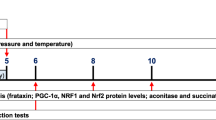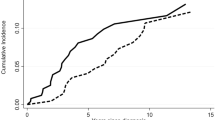Abstract
Neonates with septicemia tend to develop granulocytopenia, which may, in part, be due to septic mediators such as oxygen free radicals and tumor necrosis factor alpha (TNF-α). Granulocytopenia may be caused by a decrease in granulocyte growth and/or an increase in granulocyte destruction. In the present study, we investigated antioxidant regulation of endotoxin-modulated neonatal granulopoiesis and granulocyte apoptosis. Using human umbilical cord blood (HUCB), we found that simulating endotoxemia in vitro elicited significant superoxide production within a few minutes. Endotoxin exposure suppressed colony-forming unit–granulocyte and monocyte formation in a dose-dependent fashion. Addition of antioxidants such as N-acetyl-cysteine could reverse the endotoxin suppression of colony-forming unit–granulocyte and monocyte formation (13 ± 5 versus 75 ± 5 colony-forming units/mL). Spontaneous in vitro granulocyte apoptosis in 6 h, as reflected by phosphatidylserine expression on the cell surface, was higher in granulocytes from HUCB than in those from adult blood (10.8 ± 1.0%versus 5.6 ± 1.2%). The addition of endotoxin or IL-8 to the cells in the in vitro model did not promote granulocyte apoptosis, but TNF-α, a major mediator of the effects of endotoxin, significantly induced granulocyte apoptosis in HUCB (control versus TNF-α: 8.9 ± 1.2%versus 35.9 ± 2.9%). Addition of the antioxidant N-acetyl-cysteine effectively blocked TNF-α-induced granulocyte apoptosis as demonstrated by DNA fragmentation. Results from these studies indicate that oxygen radicals are directly involved in endotoxin suppression of granulopoiesis, and indirectly promote granulocyte apoptosis, presumably through TNF-α-mediated action. Thus, under certain conditions, modulation of oxygen radical production in the blood may benefit neonates with granulocytopenia.
Similar content being viewed by others
Log in or create a free account to read this content
Gain free access to this article, as well as selected content from this journal and more on nature.com
or
Abbreviations
- HUCB:
-
human umbilical cord blood
- CFU-GM:
-
colony-forming units–granulocyte and monocyte
- LPS:
-
lipopolysaccharide
- NAC:
-
N-acetyl-cysteine
- PS:
-
phosphatidylserine
- SOD:
-
superoxide dismutase
- TNF-α:
-
tumor necrosis factor alpha
References
Olson NC, Grizzle MK, Anderson DL 1987 Effect of polyethylene glycol-superoxide dismutase and catalase on endotoxemia in pigs. J Appl Physiol 63: 1526–1532.
Steinshamn S, Bemelmans MH, Buurman WA, Waage A 1995 Granulocytopenia reduces release of soluble TNF receptor p75 in endotoxin-stimulated mice: a possible mechanism of enhanced TNF activity. Cytokine 7: 50–56.
Saugstad OD 1990 Oxygen toxicity in the neonatal period. Acta Paediatr Scand 79: 881–892.
Wolach B 1997 Neonatal sepsis: pathogenesis and supportive therapy. Semin Perinatol 21: 28–38.
Leglise MC, Darodes de Tailly P, Vignot JL, Le Bot MA, Le Roux AM, Riche C 1996 A cellular model for drug interactions on hematopoiesis: the use of human umbilical cord blood progenitors as a mode for the study of drug-related myelosuppression of normal hematopoiesis. Cell Biol Toxicol 12: 39–53.
Kogler G, Callejas J, Sorg RV, Fischer J, Migliaccio AR, Wernet P 1998 The effect of different thawing methods, growth factor combinations and media on the ex vivo expansion of umbilical cord blood primitive and committed progenitors. Bone Marrow Transplant 21: 233–241.
Peters R, Leyvraz S, Perey L 1998 Apoptotic regulation in primitive hematopoietic precursors. Blood 92: 2041–2052.
Hiroi M, Tajima M, Shimojima T, Kashimata M, Miyata T, Sakagami H 1998 Re-evaluation of the culture condition of polymorphonuclear cells for the study of apoptosis induction. Anticancer Res 18: 1813–1818.
Lee SL, Wang WW, Fanburg BL 1998 Superoxide as an intermediate signal for serotonin-induced mitogenesis. Free Radic Biol Med 24: 885–888.
Allen RG, Balin AK, Reimer RJ, Sohal RS, Nations C 1998 Superoxide dismutase induces differentiation in microplasmodia of the slime mold Physarum polycephalum. Arch Biochem Biophys 261: 205–211.
Brand K, Eisele T, Kreusel U, Page M, Page S, Hass M, Gerling A, Kaltschmidt C, Neumann FJ, Mackman N, Baeurele PA, Walli AK, Neumeier D 1997 Dysregulation of monocytic nuclear factor-kappa B by oxidized low-density lipoprotein. Arterioscler Thromb Vasc Biol 17: 1901–1909.
Strack PR, Waxman L, Fagan JM 1996 Activation of the multicatalytic endopeptidase by oxidants. Biochemistry 25: 7142–7149.
Yang KD, Shaio MF 1994 Hydroxyl radical as an early signal involved in phorbol ester-induced monocytic differentiation of HL60 cells. Biochem Biophys Res Commun 200: 1650–1657.
Bauer MKA, Vogt M, Los M, Siegel J, Wesselborg S, Schulze-Osthoff K 1998 Role of reactive oxygen intermediates in activation-induced CD95 (APO-1/Fas) ligand expression. J Biol Chem 273: 8048–8055.
Hockenbery DM, Oltvai ZN, Yin XM, Milliman CL, Korsmeyer SJ 1993 Bcl-2 function is an antioxidant pathway to prevent apoptosis. Cell 75: 241–251.
Sandstrom PA, Mannie MD, Buttke TM 1994 Inhibition of activation-induced death in T cell hybridomas by Thiol antioxidants: oxidative stress as a mediator of apoptosis. J Leukoc Biol 55: 221–226.
Kane DJ, Sarsfian TA, Anton R, Hahn H, Gralla EB, Valentine JS, Ord T, Bredesen DE 1993 Bcl-2 inhibition of neural death: decreased generation of reactive oxygen species. Science 262: 1274–1277.
Abello PA, Fidler SA, Bulkley GB, Buchman TG 1994 Antioxidants modulate induction of programmed endothelial cell death (apoptosis) by endotoxin. Arch Surg 129: 134–140.
Shapira L, Champagne C, Gordon B, Amar S, Van Dyke TE 1995 Lipopolysaccharide priming of superoxide release by human neutrophils: role of membrane CD14 and serum LPS binding protein. Inflammation 19: 289–295.
Yang KD, Shaio MF, Augustine NH, Hill HR 1994 Effects of fibronectin on phagocyte activation: implications in respiratory burst and actin polymerization. J Cell Physiol 158: 347–353.
Yang KD, Chao CY, Shaio MF 1998 Pentoxifylline synergizes with all-trans retinoic acid to induce differentiation of HL-60 myelocytic cells, but suppresses tRA-augmented clonal growth of normal CFU-GM. Acta Haematol 99: 191–199.
Susin SA, Zamzami N, Castedo M, Daugas E, Wang HG, Geley S, Fassy F, Reed JC, Kroemer G 1997 The central executioner of apoptosis: multiple connections between protease activation and mitochondria in Fas/APO-1 (CD95-) and ceramide-induced apoptosis. J Immunol 186: 25–37.
Marchetti P, Castedo M, Susin SA, Zamzami N, Hirsch T, Macho A, Haeffner A, Hirch F, Geuskens M, Kroemer G 1996 Mitochondrial permeability transition is a central coordinating event of apoptosis. J Exp Med 184: 1155–1160.
Dresch C, Najean Y, Bauchet J 1975 Kinetic studies of 51Cr and DF32P labelled granulocytes. Br J Haematol 29: 67–80.
Camus G, Poortmans J, Nys M, Deby-Dupont G, Duchateau J, Deby C, Lamy M 1997 Mild endotoxemia and the inflammatory response induced by a marathon race. Clin Sci 92: 415–422.
Berger D, Boelke E, Stanescu A, Buttenschoen K, Vasilescu C, Seidelmann M, Beger HG 1995 Endotoxemia and mediator release during colonoscopy. Endoscopy 27: 671–675.
de Werra I, Jaccard C, Corradin SB, Chiolero R, Yersin B, Gallati H, Assicot M, Bohuon C, Baumgartner JD, Galuser MP, Heumann D 1997 Cytokines, nitrite/nitrate, soluble tumor necrosis factor receptors, and procalcitonin concentrations: comparisons in patients with septic shock, cardiogenic shock, and bacterial pneumonia. Crit Care Med 25: 607–613.
Beckman BS, Balin AK, Allen RG 1989 Superoxide dismutase induces differentiation of Friend erythroleukemia cells. J Cell Physiol 139: 370–376.
Suda N, Morita I, Kuroda T, Murota S 1993 Participation of oxidative stress in the process of osteoclast differentiation. Biochim Biophys Acta 1157: 318–323.
Mazor D, Golan E, Philip V, Katz M, Jafe A, Ben-Zvi Z, Meyerstein N 1996 Red blood cell permeability to thio compounds following oxidative stress. Eur J Haematol 57: 241–246.
Abello PA, Fidler SA, Buchman TG 1994 Thio reducing agents modulate induced apoptosis in porcine endothelial cells. Shock 2: 79–83.
Schnackenberg CG, Welch WJ, Wilcox CS 1998 Normalization of blood pressure and renal vascular resistance in SHR with a membrane-permeable superoxide dismutase mimetic: role of nitric oxide. Hypertension 32: 59–64.
Mitchell JB, DeGraff W, Kaufman D, Krishna MC, Samuni A, Finkelstein E, Ahn MS, Hahn SM, Gamson J, Russo A 1991 Inhibition of oxygen-dependent radiation-induced damage by the nitroxide superoxide dismutase mimic, tempol. Arch Biochem Biophys 289: 62–70.
Acknowledgements
The authors thank the nursery staff in Chang Gung Memorial Hospital at Kaohsiung for their help in collecting umbilical cord bloods for studies. We also thank Dr. Hans D. Ochs and Dr. Harry R. Hill for their helpful review of the manuscript.
Author information
Authors and Affiliations
Additional information
This work was supported, in part, by grants NSC88-2314-B182-096 and NSC 89-2320-B-182-007-M53 from the National Science Council, Taiwan.
Dr. Kuender D. Yang, Chang Gung Children's Hospital at Kaohsiung, Office of Vice Superintendents, 123 Ta-Pei Road, Niau-Sung, Kaohsiung 833, Taiwan.
Rights and permissions
About this article
Cite this article
Yang, K., Chen, MZ., Teng, RJ. et al. A Model to Study Antioxidant Regulation of Endotoxemia-Modulated Neonatal Granulopoiesis and Granulocyte Apoptosis. Pediatr Res 48, 829–834 (2000). https://doi.org/10.1203/00006450-200012000-00021
Received:
Accepted:
Issue date:
DOI: https://doi.org/10.1203/00006450-200012000-00021
This article is cited by
-
Vitamin D enhances reactive oxygen intermediates production in phagocytic cells in term and preterm infants
Pediatric Research (2016)
-
Mean Platelet Volume and Uric Acid Levels in Neonatal Sepsis
The Indian Journal of Pediatrics (2014)
-
Early neutropenia is not associated with an increased rate of nosocomial infection in very low-birth-weight infants
Journal of Perinatology (2009)



